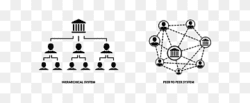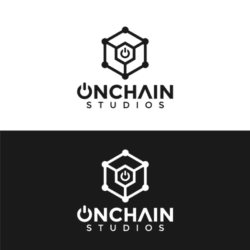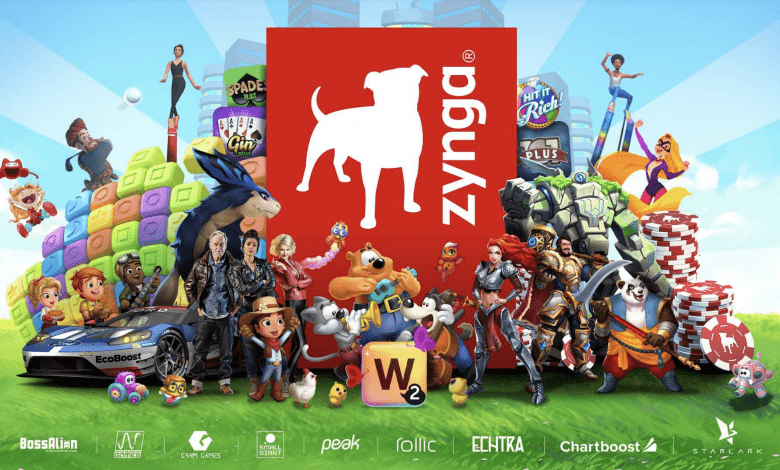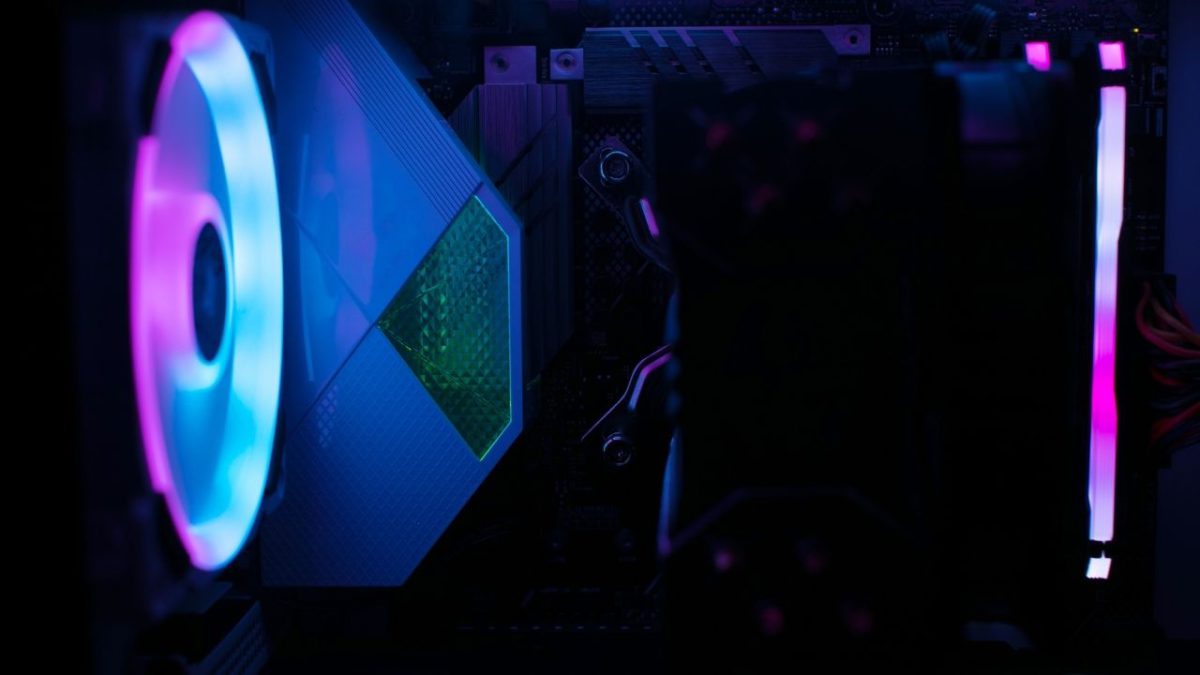Top 10 Characteristics Of Blockchain Gaming Expansion Into Metaverse
Blockchain gaming is a revolutionary concept that combines elements of blockchain technology and traditional gaming, transforming the way games are developed, played, and monetized. It leverages the decentralized and transparent nature of blockchain to create new gaming experiences, provide ownership of in-game assets, and enable secure and fair transactions between players.
At its core, blockchain gaming utilizes a distributed ledger, known as a blockchain, to record and verify game-related transactions and interactions. Unlike traditional games where data is stored on centralized servers controlled by game developers or publishers, blockchain games store their data on a decentralized network of computers, making it tamper-resistant and resistant to censorship.
One of the key features of blockchain gaming is the concept of non-fungible tokens (NFTs). NFTs are unique digital assets that can represent in-game items, characters, or even entire game worlds. These assets are stored on the blockchain, allowing players to have true ownership and control over them. This ownership can be transferred, bought, and sold in a secure and transparent manner, giving rise to a vibrant digital asset marketplace.
Additionally, blockchain gaming introduces the concept of play-to-earn, where players can earn cryptocurrency or other valuable rewards by participating in the game. This is made possible through the use of blockchain-based tokens that have real-world value. Players can earn these tokens by completing in-game tasks, achieving milestones, or by contributing to the game ecosystem in various ways. These earned tokens can then be exchanged for other cryptocurrencies or fiat currencies, allowing players to monetize their gaming skills and time.
Furthermore, blockchain gaming fosters a sense of trust and fairness through the use of smart contracts. Smart contracts are self-executing agreements written in code that automatically enforce the rules and conditions set by the game developers. This ensures that all interactions within the game are transparent and verifiable, eliminating the need for intermediaries and reducing the potential for cheating or fraud.
Blockchain gaming also promotes interoperability between different games and platforms. Through the use of standardized protocols and APIs, players can seamlessly transfer their in-game assets from one game to another or even across multiple gaming platforms. This interoperability enhances player engagement and expands the possibilities for cross-game collaborations and economies.
Moreover, blockchain gaming encourages community participation and decentralization. Players can actively contribute to the development and governance of the games they play. Decentralized autonomous organizations (DAOs) are often formed, allowing players to have a say in the decision-making process, such as voting on game updates, new features, or changes to the game’s economy. This level of community involvement empowers players and creates a more inclusive and democratic gaming ecosystem.
Despite the numerous advantages, blockchain gaming is still an emerging field facing challenges such as scalability, user experience, and adoption. Blockchain networks can currently struggle with handling the high transaction volume and speed required by real-time games. However, ongoing research and development efforts are focused on addressing these challenges and improving the overall gaming experience.
In conclusion, blockchain gaming represents a paradigm shift in the gaming industry, offering players true ownership of in-game assets, secure and transparent transactions, and the ability to earn real-world value through play. With its potential to revolutionize the way games are developed, played, and monetized, blockchain gaming has the potential to reshape the future of the gaming industry.
Also read: A Beginner’s Guide To Blockchain Gaming: Combining Technology And Entertainment
Importance of Blockchain Gaming for the Economy
Blockchain gaming holds significant importance for the economy as it introduces several key elements that can positively impact various aspects of the gaming industry and beyond. Here are some reasons why blockchain gaming is important for the economy:
1. New Economic Opportunities: Blockchain gaming enables players to monetize their skills and time through the play-to-earn model. By earning cryptocurrency or valuable in-game assets, players can participate in the digital economy and potentially generate income. This opens up new avenues for individuals, especially in regions where traditional employment opportunities may be limited. Players can trade, sell, or rent their in-game assets, creating a vibrant digital asset marketplace and contributing to economic growth.
2. Player Empowerment and Ownership: Traditional gaming often leaves players with no ownership or control over in-game assets. However, blockchain gaming leverages non-fungible tokens (NFTs) and smart contracts to grant players true ownership. This ownership extends to the ability to sell, trade, or transfer assets both within and outside the game ecosystem. By empowering players with ownership rights, blockchain gaming allows them to participate in the economy and benefit from the value of their digital assets.
3. Stimulating Innovation and Entrepreneurship: Blockchain gaming encourages developers, creators, and entrepreneurs to explore new possibilities. The ability to create and tokenize unique in-game assets, characters, or even entire game worlds opens up opportunities for creative expression and innovation. Developers can create games that leverage blockchain technology, experiment with novel gameplay mechanics, and design new economic models. This fosters entrepreneurship within the gaming industry, leading to the emergence of innovative startups and driving economic growth.
4. Transparent and Fair Economy: Blockchain gaming leverages the transparency and immutability of blockchain technology. This ensures that transactions and interactions within the game ecosystem are recorded on the blockchain, making them verifiable and tamper-resistant. By eliminating intermediaries and central authorities, blockchain gaming promotes a fairer economy where players can transact with confidence. It reduces the potential for fraud, cheating, or unfair practices, thus fostering trust among players and creating a level playing field.
5. Interoperability and Cross-Platform Economies: Blockchain gaming introduces interoperability between different games and platforms. Through standardized protocols and APIs, players can transfer their in-game assets across multiple games or platforms. This interoperability opens up opportunities for cross-game collaborations, economies, and marketplaces. Players can leverage their assets across various gaming experiences, potentially increasing their value and creating new economic ecosystems.
6. Democratizing Game Development: Blockchain gaming promotes community participation and decentralized decision-making through the use of decentralized autonomous organizations (DAOs). Players can actively contribute to the development and governance of the games they play by voting on game updates, new features, or economic changes. This level of community involvement empowers players and creates a more inclusive and democratic gaming ecosystem. It also opens avenues for developers and creators to engage directly with their audience, fostering a collaborative and innovative environment.
7. Impact on Cryptocurrency Adoption: Blockchain gaming has the potential to drive cryptocurrency adoption on a larger scale. By incorporating cryptocurrencies and blockchain technology into gameplay and rewards, players are exposed to digital currencies and gain hands-on experience using them. This exposure can help familiarize a broader audience with cryptocurrencies, potentially leading to increased adoption and usage in other sectors of the economy beyond gaming.
In summary, blockchain gaming offers economic opportunities, empowers players with ownership rights, stimulates innovation, fosters a fair and transparent economy, promotes interoperability, democratizes game development, and has the potential to drive cryptocurrency adoption. By revolutionizing the gaming industry, blockchain gaming contributes to economic growth, job creation, and the evolution of digital economies.
Also read: The Rise Of Blockchain gaming: Top 10 Ways Players Can Earn More Money
How Blockchain Gaming is related to Metaverse
Blockchain gaming and the concept of the Metaverse are closely intertwined and can greatly complement each other. The Metaverse refers to a virtual universe that encompasses interconnected digital spaces, where people can interact, create, and engage in a variety of activities. It is often described as a collective virtual shared space, blurring the lines between the physical and digital worlds.
Blockchain gaming plays a crucial role in the development and functioning of the Metaverse. Here are some key aspects of how blockchain gaming is related to the Metaverse:
1. Ownership and Interoperability: Blockchain gaming introduces the concept of true ownership of in-game assets through the use of non-fungible tokens (NFTs). NFTs are unique digital tokens that can represent various items, characters, or properties within a game. These NFTs are stored on the blockchain, giving players full ownership and control over their virtual possessions. In the Metaverse, this ownership extends beyond a single game and allows players to use and transfer their assets across different virtual spaces. Blockchain technology ensures the interoperability of assets, enabling seamless movement and utilization within the Metaverse.
2. Decentralization and Governance: The Metaverse is built on the principles of decentralization and community governance. Blockchain technology provides the necessary infrastructure to create decentralized autonomous organizations (DAOs) that allow participants to have a say in the decision-making process. In the context of blockchain gaming, DAOs enable players to actively contribute to the development and governance of the virtual worlds within the Metaverse. By utilizing smart contracts, players can vote on updates, propose changes, and collectively shape the direction of the virtual environments they inhabit.
3. Economy and Digital Assets: The Metaverse relies heavily on a digital economy where players can participate, trade, and transact. Blockchain gaming enhances this economic aspect by introducing a secure and transparent marketplace for in-game assets. Through the use of blockchain and NFTs, players can buy, sell, and trade virtual items with verified ownership and transaction history. The ownership of these assets can extend beyond a single game, allowing players to leverage their digital possessions across multiple virtual environments in the Metaverse. This creates a vibrant and interconnected economy where virtual assets hold real-world value.
4. Play-to-Earn and Tokenization: Blockchain gaming introduces the play-to-earn model, where players can earn cryptocurrency or valuable in-game rewards by participating in the game. These rewards often take the form of blockchain-based tokens that have real-world value. In the context of the Metaverse, these tokens can serve as a common currency for transacting across various virtual spaces. Players can earn tokens through gameplay, create and sell virtual items, or contribute to the development of the Metaverse ecosystem. This economic incentive encourages active participation and creates a self-sustaining virtual economy within the Metaverse.
5. Interactivity and Socialization: The Metaverse is designed to facilitate social interactions and collaboration among users. Blockchain gaming adds a layer of interactivity by allowing players to engage in multiplayer experiences, team up, and compete with others within the virtual worlds. The decentralized nature of blockchain technology enables secure and trustless interactions, fostering a sense of fairness and transparency. In addition, blockchain-based identity systems can ensure the integrity and privacy of users’ virtual identities, enabling seamless and secure socialization within the Metaverse.
6. Scalability and Technical Infrastructure: The scalability of blockchain technology is a crucial aspect when considering its integration with the Metaverse. As the Metaverse envisions massive virtual environments with a vast number of participants, it requires a robust and scalable technical infrastructure to handle the transaction volume, real-time interactions, and complex gameplay mechanics. Various blockchain scalability solutions, such as layer 2 solutions and sidechains, are being developed to address these challenges and provide the necessary infrastructure for a seamless and immersive Metaverse experience.
Blockchain gaming and the Metaverse are deeply interconnected. Blockchain technology provides the foundations for ownership, interoperability, decentralization, and economic systems within the Metaverse. By integrating blockchain gaming into the concept of the Metaverse, virtual worlds can become more immersive, interactive, and economically viable, leading to a transformative and inclusive digital experience for users.
Top 10 Characteristics of Blockchain Gaming Expansion into Metaverse
The metaverse is a rapidly growing digital world that is being powered by blockchain technology. Blockchain gaming is one of the most exciting sectors of the metaverse, and it is characterized by a number of unique features.
**1. ** Decentralization: Blockchain gaming is decentralized, which means that it is not controlled by any single entity. This gives players more control over their in-game assets and experiences.
**2. ** Transparency: Blockchain gaming is transparent, which means that all transactions are recorded on a public ledger. This makes it easy to track the ownership of in-game assets and to prevent fraud.
**3. ** Immutability: Blockchain gaming is immutable, which means that once data is recorded on the blockchain, it cannot be changed. This ensures that the integrity of in-game assets is protected. 
**4. ** Ownership: Blockchain gaming gives players true ownership of their in-game assets. This means that players can trade, sell, or lend their assets to others, without having to worry about them being revoked.
**5. ** Interoperability: Blockchain gaming is interoperable, which means that in-game assets can be transferred between different games. This allows players to take their assets with them wherever they go, and it creates a more open and interconnected metaverse.
**6. ** Security: Blockchain gaming is secure, which means that in-game assets are protected from hacking and theft. This is because the blockchain is a tamper-proof ledger that cannot be easily hacked.
**7. ** Scalability: Blockchain gaming is scalable, which means that it can be easily expanded to accommodate more players and more in-game assets. This is important for the future of the metaverse, as it will need to be able to support a large number of users and a wide variety of experiences
**8. ** Accessibility: Blockchain gaming is accessible, which means that it can be played by anyone with a computer or a mobile device. This makes it a more inclusive and accessible form of entertainment.
**9. ** Engagement: Blockchain gaming is engaging, which means that it keeps players coming back for more. This is because blockchain games offer a variety of features that traditional games do not, such as the ability to own and trade in-game assets.
**10. ** Innovation: Blockchain gaming is innovative, which means that it is constantly evolving and growing. This is because blockchain technology is a new and rapidly developing field, and there are always new ways to use it to create more engaging and immersive gaming experiences.
These are just some of the top 10 characteristics of blockchain gaming expansion into the metaverse. As the metaverse continues to grow, blockchain gaming is sure to play an increasingly important role.
Risks associated with blockchain gaming
While blockchain gaming offers numerous advantages, it also carries certain risks and challenges. It’s important to be aware of these potential risks when engaging in blockchain gaming. Here are some of the key risks associated with blockchain gaming:
1. Volatility and Speculation: Many blockchain games use cryptocurrencies or tokens as a form of in-game currency or rewards. These tokens can be subject to high price volatility and speculation, which can lead to significant value fluctuations. Players who hold or trade these tokens may experience unexpected gains or losses. It’s crucial to understand the risks involved in holding or investing in these tokens and to exercise caution when participating in speculative activities.
2. Security Vulnerabilities: Blockchain technology itself is generally considered secure, but vulnerabilities can arise from poorly designed smart contracts, malicious actors, or exploits within the gaming ecosystem. Smart contracts, which automate transactions and enforce game rules, can contain coding errors or vulnerabilities that may be exploited. Additionally, players’ digital wallets and private keys can be targeted by hackers. It’s important to be cautious and use reputable platforms and wallets to minimize the risk of security breaches.
3. Regulatory Uncertainty: The regulatory landscape surrounding blockchain gaming is still evolving in many jurisdictions. Governments and regulatory bodies are grappling with how to categorize and regulate blockchain-based assets and transactions. Uncertainty in regulations can impact the adoption, operation, and monetization of blockchain games. Players and developers should stay informed about local regulations and comply with applicable laws to mitigate legal and compliance risks.
4. Scalability and User Experience: Blockchain networks have inherent limitations in terms of scalability and transaction speed. This can result in slower and more expensive transactions, especially during peak usage times. In gaming, where real-time interactions and responsiveness are crucial, scalability issues can affect user experience and hinder the seamless integration of blockchain technology. Ongoing research and development efforts are focused on addressing these scalability challenges.
5. Lack of User-Friendly Interfaces: Blockchain gaming platforms and wallets often require users to have a certain level of technical knowledge and familiarity with blockchain technology. The user interfaces may not always be intuitive or user-friendly, posing barriers to entry for less tech-savvy players. Improving the accessibility and usability of blockchain gaming platforms is essential for broader adoption and participation.
6. Fragmentation and Interoperability: Blockchain gaming involves multiple blockchain networks and platforms, which can lead to fragmentation and interoperability challenges. Incompatibilities between different blockchain protocols and standards can hinder the seamless transfer of assets or data between games or virtual worlds. This fragmentation can limit the potential for cross-game collaborations and economies.
7. Lack of Content and Mainstream Adoption: While blockchain gaming has shown promising growth, the ecosystem still faces challenges in terms of mainstream adoption and content availability. The number of blockchain games and their diversity may be limited compared to traditional gaming. Achieving widespread adoption of blockchain gaming requires the development of compelling, high-quality games that cater to a broader audience.
8. Environmental Impact: Blockchain networks, particularly those using proof-of-work consensus mechanisms, require significant computational power and energy consumption. This has raised concerns about the environmental impact of blockchain gaming. Efforts are being made to explore more sustainable consensus mechanisms and reduce the carbon footprint associated with blockchain technology.
It’s crucial for players, developers, and stakeholders in the blockchain gaming ecosystem to be aware of these risks and actively work towards mitigating them. This can be achieved through education, improved security measures, regulatory compliance, user experience enhancements, and ongoing technological advancements.
https://twitter.com/i/status/1668680439861485597
Future of Blockchain gaming
The future of blockchain gaming is full of potential and holds exciting possibilities for the gaming industry. As technology continues to advance and blockchain adoption grows, we can expect to see several significant developments in the field. Here are some key aspects that may shape the future of blockchain gaming:
1. Enhanced Scalability: Scalability is a critical factor for blockchain gaming to achieve widespread adoption. Advancements in blockchain technologies, such as layer 2 solutions, sidechains, and sharding, are being developed to address scalability issues. These solutions aim to improve transaction throughput, reduce fees, and enable real-time interactions, allowing for more immersive and seamless gaming experiences.
2. Improved User Experience: User experience will play a crucial role in the success of blockchain gaming. Efforts are being made to simplify blockchain interfaces, enhance wallet integration, and provide intuitive user experiences that cater to both blockchain enthusiasts and mainstream gamers. Seamless onboarding processes, smoother transactions, and reduced friction will contribute to broader adoption and engagement.
3. Cross-Platform Interoperability: Interoperability across different blockchain networks and gaming platforms will become increasingly important. Players should be able to transfer their assets, progress, and identities seamlessly between games and virtual worlds within the Metaverse. Standardized protocols and infrastructure will facilitate cross-platform compatibility, allowing for vibrant and interconnected gaming experiences.
4. Integration with Virtual Reality (VR) and Augmented Reality (AR): Blockchain gaming can be enhanced through integration with VR and AR technologies. This integration can provide more immersive and interactive experiences, allowing players to physically interact with virtual environments and assets. Combining blockchain’s ownership and transactional capabilities with the immersion of VR and AR can open up entirely new dimensions for gaming.
5. AI and Procedural Generation: Artificial intelligence (AI) and procedural generation techniques can be leveraged to enhance the gaming experience in blockchain games. AI algorithms can generate dynamic and personalized content, including intelligent non-player characters (NPCs) and adaptive game mechanics. Procedural generation can create vast and diverse virtual worlds that players can explore and interact with, ensuring unique experiences for each player.
6. Deeper Integration of Play-to-Earn Models: The play-to-earn model, where players can earn real-world value through gameplay, is likely to evolve and expand in the future. Blockchain gaming will continue to explore innovative ways to reward players for their time, skills, and contributions to the game ecosystem. This could include more diverse earning opportunities, such as esports tournaments, game asset rentals, and in-game services provided by players.
7. Integration of Decentralized Finance (DeFi): The integration of DeFi protocols within blockchain gaming can create new opportunities for players to leverage their in-game assets and participate in decentralized financial activities. Features such as staking, lending, borrowing, and yield farming can provide additional avenues for players to generate income and maximize the value of their digital assets.
8. Greater Adoption and Content Variety: As blockchain gaming matures, we can expect a broader range of games catering to different genres, player preferences, and target audiences. Traditional game developers and publishers are likely to enter the blockchain gaming space, bringing established franchises and high-quality content to the ecosystem. This increased adoption and content variety will help attract more players and drive mainstream adoption.
9. Integration of Real-World Assets: The integration of real-world assets and tokenization within blockchain gaming could introduce exciting possibilities. Players may be able to own and trade digital representations of real-world assets, such as artwork, real estate, or intellectual property. This can bridge the gap between the digital and physical worlds, creating unique opportunities for value exchange and investment.
10. Advancements in Blockchain Governance: Decentralized autonomous organizations (DAOs) and community governance will play a crucial role in shaping the future of blockchain gaming. Players will have a greater say in decision-making processes
, game development, and economic policies. DAOs can enable collective decision-making, incentivize community participation, and foster a more inclusive and democratic gaming ecosystem.
In summary, the future of blockchain gaming looks promising, with advancements in scalability, user experience, cross-platform interoperability, VR/AR integration, AI, play-to-earn models, DeFi integration, content variety, real-world asset integration, and blockchain governance. These developments have the potential to revolutionize the gaming industry, creating immersive, inclusive, and economically vibrant gaming experiences for players around the world.
Stay informed with daily updates from Blockchain Magazine on Google News. Click here to follow us and mark as favorite: [Blockchain Magazine on Google News].
Get Blockchain Insights In Inbox
Stay ahead of the curve with expert analysis and market updates.
latest from tech
Disclaimer: Any post shared by a third-party agency are sponsored and Blockchain Magazine has no views on any such posts. The views and opinions expressed in this post are those of the clients and do not necessarily reflect the official policy or position of Blockchain Magazine. The information provided in this post is for informational purposes only and should not be considered as financial, investment, or professional advice. Blockchain Magazine does not endorse or promote any specific products, services, or companies mentioned in this posts. Readers are encouraged to conduct their own research and consult with a qualified professional before making any financial decisions. The featured image used is just a creative depiction of the title and it does not intend to hurt sentiments of any person or institution. If it hurts anyone sentiments, please do not hesitate to reach out to Blockchain Magazine.

 Bitcoin
Bitcoin  Ethereum
Ethereum  XRP
XRP  Tether
Tether  Solana
Solana  Dogecoin
Dogecoin  USDC
USDC  Cardano
Cardano  Lido Staked Ether
Lido Staked Ether  TRON
TRON  Chainlink
Chainlink  Avalanche
Avalanche  Sui
Sui  Wrapped stETH
Wrapped stETH  Wrapped Bitcoin
Wrapped Bitcoin  Toncoin
Toncoin  Stellar
Stellar  Hedera
Hedera  Shiba Inu
Shiba Inu  Polkadot
Polkadot  WETH
WETH  LEO Token
LEO Token  Litecoin
Litecoin  Bitcoin Cash
Bitcoin Cash  Hyperliquid
Hyperliquid  Bitget Token
Bitget Token  Uniswap
Uniswap  Official Trump
Official Trump  USDS
USDS  Wrapped eETH
Wrapped eETH  Pepe
Pepe  NEAR Protocol
NEAR Protocol  Ethena USDe
Ethena USDe  Aave
Aave  Aptos
Aptos  Internet Computer
Internet Computer  Ondo
Ondo  WhiteBIT Coin
WhiteBIT Coin  Ethereum Classic
Ethereum Classic  Monero
Monero  Mantle
Mantle  Cronos
Cronos  POL (ex-MATIC)
POL (ex-MATIC)  Render
Render  Dai
Dai  Algorand
Algorand  OKB
OKB  Artificial Superintelligence Alliance
Artificial Superintelligence Alliance 







